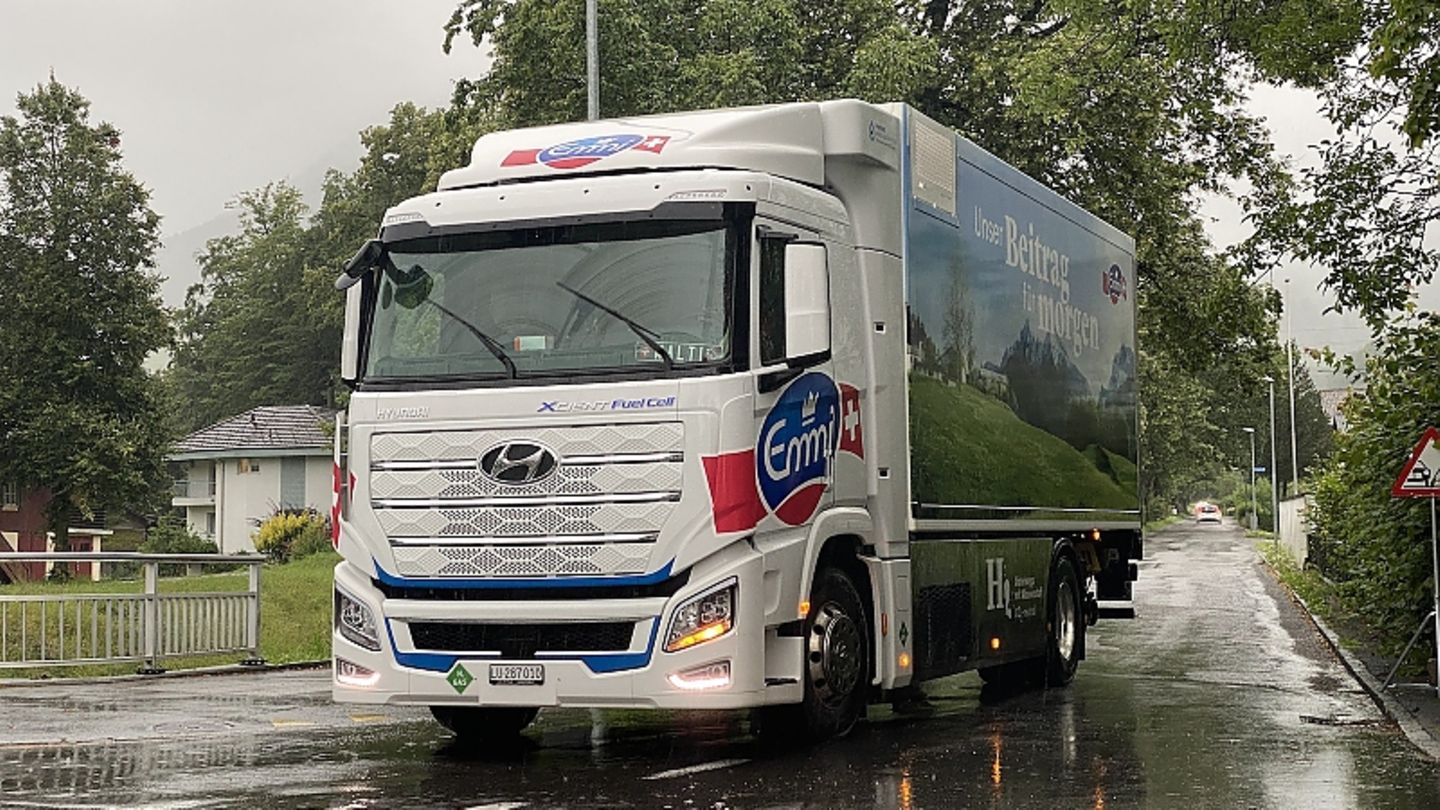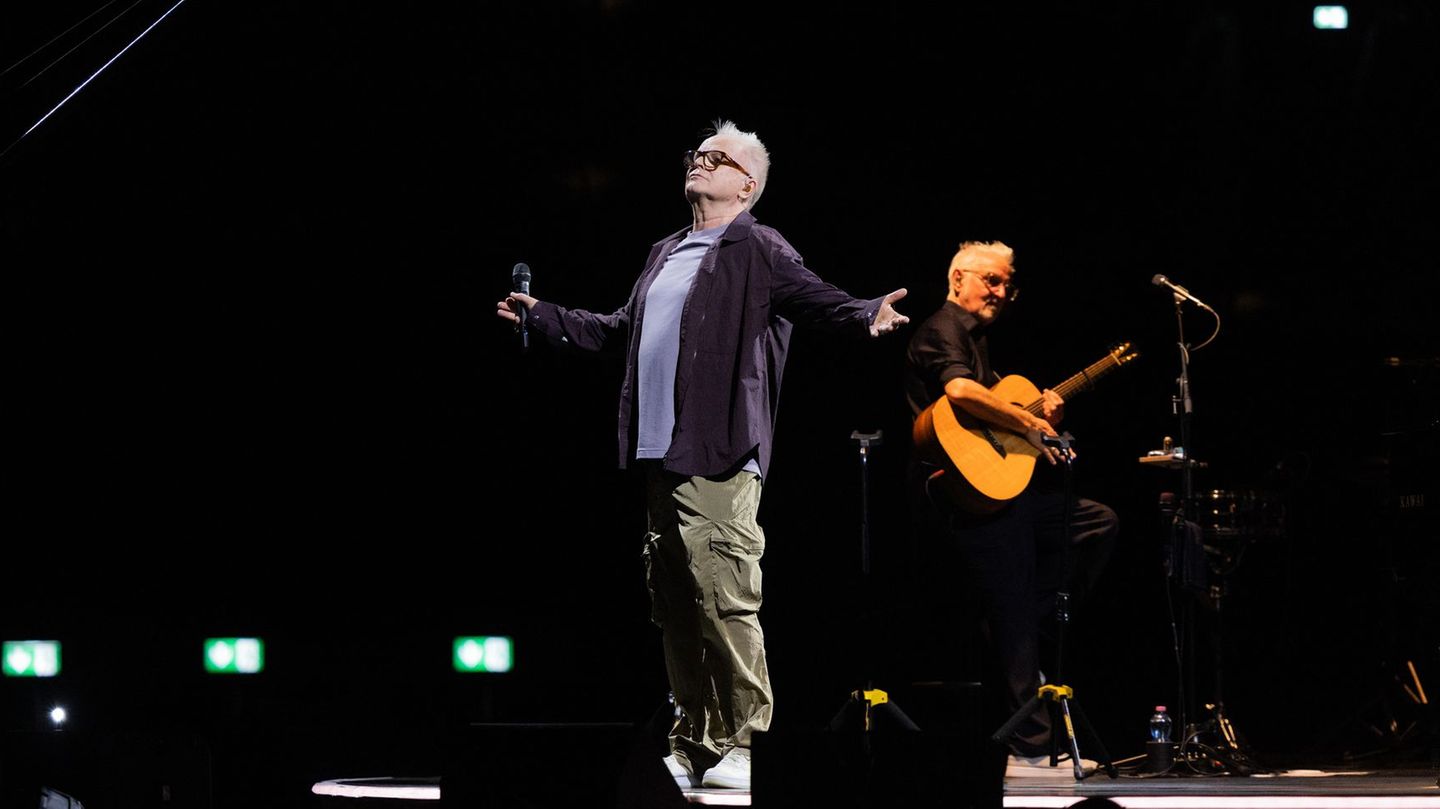Fuel cell technology has so far had no chance of asserting itself in passenger cars. It looks much better with the trucks. Hyundai has been testing an Xcient fleet with various customers in Switzerland for over half a year.
It’s raining cats and dogs and driver Werner Käslin is still in a good mood. He has just made a short stopover in Flüelen on the southern tip of Lake Lucerne at a Lidl store; now it’s on towards Sarnen. “Today I stood in for a colleague who had already worked off his weekly number of hours,” says Werner Käslin, “I’m a jumper and therefore on the road on almost all of our almost 80 trucks.” Käslin has been on the go for the Emmi dairy company all over Switzerland for almost 20 years. He drives to supermarkets and dairies on a day-to-day basis – today once again with one of the two fuel cell trucks from Hyundai that the Emmi dairy has been using every day for six months.
“In itself there is not much difference to the diesel trucks that we drive,” says Werner Käslin, “because of the increased weight, the Hyundai with fuel cell has a lower payload, so we have to take a trailer to it. But otherwise – it’s nice that it doesn’t vibrate like that. Empty it drives great, but fully loaded it could have more power. A diesel is five to ten km / h faster on the mountain. I’m thinking of the climb near Sankt Gallen. ” Werner Käslin has just loaded three trolleys with cheese wheels in the steady pouring rain and we’re off to Lucerne. Here is the first refueling stop of the day, because even if the digital display in the middle of the dashboard shows almost 45 percent of the tank volume, a short stopover should be made at the Agrola tank yard. “The range of the Hyundai truck is around half as long as that of our diesel models from Volvo or Mercedes,” reports Käslin, “more than 350 kilometers are barely possible with one tank of fuel. The refueling process takes barely more than ten minutes.”
The drivers did not have to retrain the fuel cells. A couple of steps have to be right – the rest is like the diesel and apart from the refueling process, nobody is allowed to lend a hand anyway. The Hyundai Xcient Fuel Cell fuel cell truck has a 190 kW drive system consisting of two 95 kW fuel cell units. The electric motor itself has an output of 350 kW / 475 PS and a maximum torque of 2,237 Nm, with the power being transmitted to the rear axle via a six-speed automatic transmission. Hyundai, which has been traveling halfway around the world with fuel cell cars in small numbers for years, has recognized the signs of the times. Since the cars with the fuel cell are clearly having a hard time on the market and are being pushed to the edge by the ever-increasing electric trend, the Koreans, like Toyota, Mercedes or Volvo, are now relying on trucks. The generously dimensioned tanks for the hydrogen can be accommodated here much more easily than in the comparatively small cars for city traffic.
The large Swiss dairy company Emmi is one of the companies to which Hyundai has divided its 49 fuel cell trucks for the test run. By 2025, Hyundai plans to multiply that number to 1,600 vehicles. There are currently two Emmi double-axle vehicles on the road in Switzerland; two more three-axle vehicles are in the planning stage. They then also offer more payload. In just under seven months, the Emmi drivers have covered almost 40,000 kilometers so far. The entire fleet has covered a million kilometers since the start of the test. “The Swiss transport and logistics companies are doing pioneering work with this project. With more than one million kilometers in less than a year, they underline the importance they see in hydrogen electromobility,” explains Jörg Ackermann, President of the H2 Mobility Association Switzerland, “the storage capacity of hydrogen alone provides a strong argument. With the Hyundai Xcient Fuel Cell, the members of the H2 Mobility Switzerland association are committed to the most effective way to decarbonise heavy vehicles.” The hydrogen model consumes around eight kilograms per 100 kilometers at a price of 12 francs per kilogram. For comparison: the other Emmi trucks consume around 30 liters of diesel per 100 kilometers at a price of 1.60 francs per liter. In addition, the Hyundai test person is exempt from the heavy vehicle tax, which is 20 cents per kilometer, thanks to the fuel cell and the Euro6 pollutant classification.
But even in small Switzerland, Emmi cannot cover its journeys with fuel cell trucks alone, because the filling station network is still thin. “There are currently six or seven petrol stations here in our catchment area,” explains Werner Käslin, “Basel is currently under construction. That will bring us a little further north.” Hyundai expects the test under real conditions to provide valuable information for its developments. The increased weight is a problem because every kilogram counts in truck traffic and the Hyundai-Saubermann is around a ton heavier than a diesel. Only a special permit ensures that the two Emmi twins can load 5.3 instead of the normal 4.5 tonnes in the mobile cold store.
Werner Käslin has meanwhile arrived at the Agrola petrol station. Nobody there – as always. First he has to shut down his vehicle like a computer so that the fuel cell can prepare for the refueling process. The seven 350-bar tanks with a total volume of 32 kilograms are hidden behind the driver’s cab. Käslin puts on the filler neck, locks it and lets the hydrogen flow in. After a short cup of coffee, we continue to Zurich and tomorrow Werner is free. He only works 80 percent and then goes about his favorite pastime – diving. And in three to four years, he might even want to exchange his BMW 325d for an electric car. “Electric is something for me and for the 19 kilometers to work there is also an electric car,” he smiles and starts his electric giant, whose electric motor is fed by the fuel cell. But first Werner Käslin is waiting for better weather.
I am a 24-year-old writer and journalist who has been working in the news industry for the past two years. I write primarily about market news, so if you’re looking for insights into what’s going on in the stock market or economic indicators, you’ve come to the right place. I also dabble in writing articles on lifestyle trends and pop culture news.




